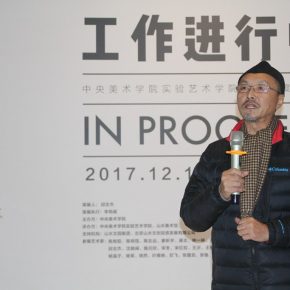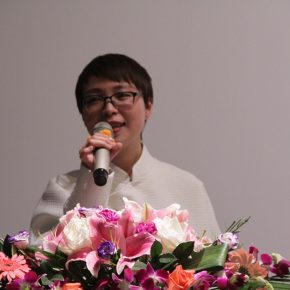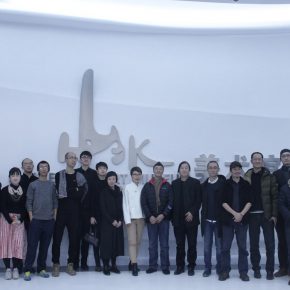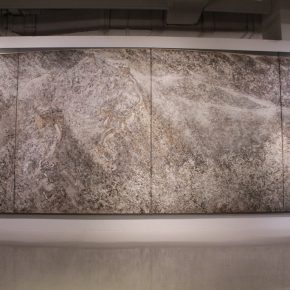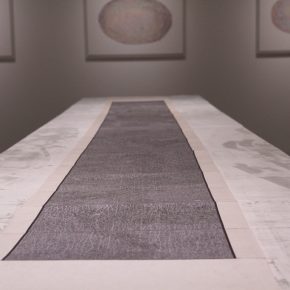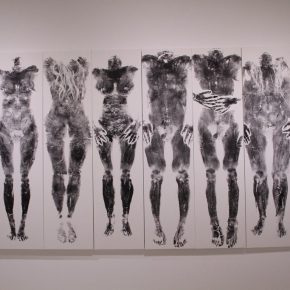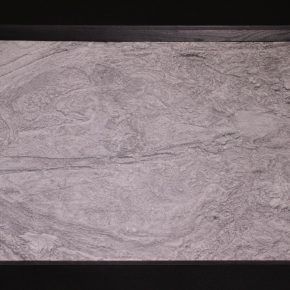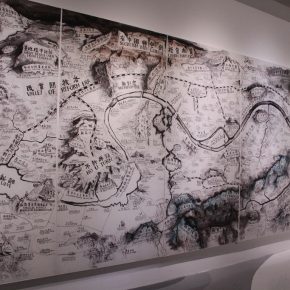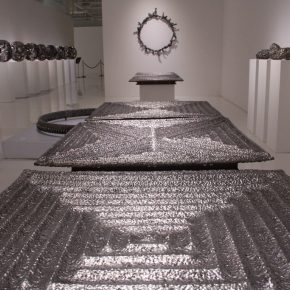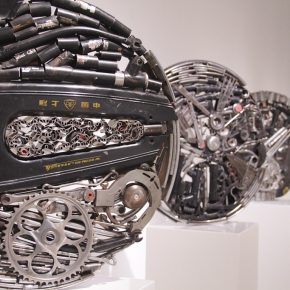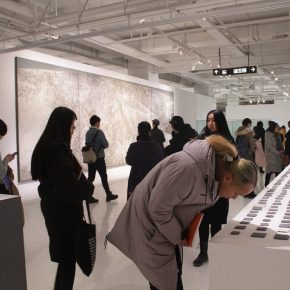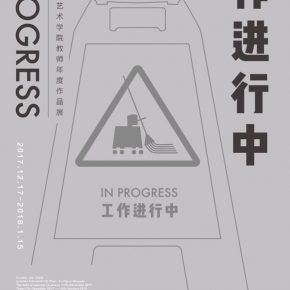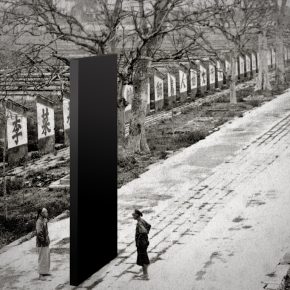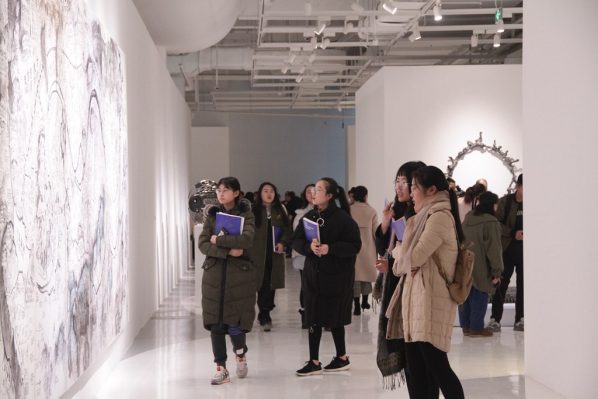
On December 17, 2017, hosted by CAFA, co-organized by CAFA School of Experimental Art and Riverside Art Museum, curated by Qiu Zhijie, “In Progress – The Annual Exhibition of Teachers from CAFA School of Experimental Art” opened at the Riverside Art Museum. In addition, curated by Qiu Zhijie, executively curated by Qi Zhen, Yu Fei, and Li Mingwei, “Charging – The Course Exhibition of Video Art in CAFA School of Experimental Art” also opened at the Riverside Art Museum at the same time.
Preface for “In Progress – The Annual Exhibition of Teachers from CAFA School of Experimental Art” by Qiu ZhijieIs it necessary for art teachers from academies to be excellent artists? Or, are excellent artists suitable to be professors for academies? There has never been a conclusion. In the United States, we seldom see the first-line artists formally teaching in an academy, while they often offer workshops or lectures. Many well-known artists, for example, Andy Warhol or Matthew Barney, have never taught in an academy. However, we find that a large number of top artists concentrated in the academies of fine arts in Germany. For example, the great painter Gerhard Richter had served as President of Kunstakademie Düsseldorf, and the master Joseph Beuys was closely related to the academy. The well-known international artists such as Peter Doig and Andreas Gursky are still teaching in the Kunstakademie Düsseldorf, while Eliasson also teaches in the Berlin University of the Arts.
People even argue whether it is good for an excellent artist to serve as a teacher of an academy or not. Most people think that a good artist who teaches at an academy will bring students the most sensitive and lively information from the art circles, helping students to directly contact the current history, and avoid being an armchair strategist. However, there are also objections, because they think the teaching of great artists will make students anxious, the strong teachers would defeat the puny students.
Chinese contemporary art education started more than 10 years ago, with two sources of teachers at the beginning: on the one hand, some teachers were transferred who tended to be contemporary artists, from other faculties of various art schools to the new specialty, on the other hand, famous artists from the art circles were recruited to teach at the academy of fine arts. The result is basically a compromise between the Continental model and the Anglo-American model. I prefer a compromise, and I am inclined to the Continent model.
I believe that if a teacher is not actively and continuously engaged in artistic exploration, his teaching itself will slowly lose its exploratory and experimental nature, and degenerate into the maintaining of a curriculum to a certain extent. He would even habitually prepare a course rather than earnestly and nervously prepare a lesson at the beginning. He will tire of teaching and miss the ability of reflection on teaching, and give up preparing a lesson. Teaching slowly becames a form of skilled work for him, and he will be gradually tired of this repeated teaching. Boredom deprives the passion of teaching, trained generations of so-called non-creative teachers, and how can we expect them to teach creative students? In fact, great teachers always regard education as a kind of creation. They not only bring new insights that continue to emerge from his artistic creation into his teaching, bringing endless vigor to the teaching, but also considers teaching as a part of his creation. If an artist attempts to use his art to change the spirit of man, to change society, the use of works to change and the use of teaching to change are of an inherent coherence. So, I believe that an ambitious artist is also a teacher at the same time. A teacher who really loves to teach is also an artist. Regardless of whether he teaches art or physics and chemistry, he could artfully teach.
Excellent artists often become attractive teachers, attracting students to imitate, which often provokes an accusation. But this accusation is actually based on myths created by the individual since romanticism. The continuous deepening of research on the same issue between teachers and students are the basis for the emergence of schools in art history, of all ages, including both Wu School and industrial landscape photography of the Kunstakademie Düsseldorf. We can’t expect that an 18-year-old student can find a new place to start. It is a fact that several generations of people relay and continue in the same subject in a place, such as the continuous exploration of colors of paintings by the Venetian School. Of course, some weak young people will become the guardians of the current style of the school, while the powerful individuals will develop the tradition of the school. In fact, a young man has gained a critical starting point and some traditions at the beginning, which offer a basis to his future unique exploration at a mature stage.
It is an extremely stupid idea to stop the excellent artists from teaching at the universities and colleges of fine arts, for their charm. One great artist’s style monopolizes the taste of the whole school, which is because there are rare great artists in this school. If there are many great artists in an academy, the students will find the conflicting views among the famous artists and teachers, and the students will have the freedom to choose, while these multiple options produces critically thinking. The independent thinking can be the high-quality thinking at this time.
Our artistic education has a blind faith in independent thinking. In fact, complete independent thinking does not mean good thinking. Keeping a person on an island, stopping his communication with anyone, although he is very independent, he will only become more stupid. This environment absolutely rules out the anxiety of influence, and no one influences him–people that could be on the autistic spectrum. We should provide young people with many good choices. We should not insult their IQs, thinking that they can’t withstand the impact of good ideas. Just as you can’t assume that they can’t stand good nutrition, while you purposely offer them poor food. So, I tend to think that teachers in the academies must be excellent artists. He can be a qualified teacher only when he is a good artist.
There is also a third argument on the relationship between teaching and creation for teachers, that is, the conflict between teaching and creative work in terms of the distribution of time and energy. When young teachers have worked at the school after graduation, the school offers them a better environment for academic exchanges, and life is more stable, so he is full of tension and passion. As a teacher of the academy, he may have more invitations to show works than other young artists. Some of them slowly feel that teaching has taken up creative time and then slowly lose the enthusiasm for teaching. Some excellent artists who have been invited to teach at art schools find the over-investment in teaching really affect the creation. I think it is because they do not find a good teaching method. In fact, teaching is to organize student to learn, and a teacher himself is one of the learners. As a learning action, teaching is bound to nourish the creation of the artist.
In my personal career in the past more 10 years, the creation has continued transforming and deepening, and I am very grateful to my teacher’s career. It was precisely because I was constantly encountering new topics in teaching that I returned to the most fundamental problem. In order to answer a variety of problems by young people, I had to force myself to carry out the ideological hardship, and I had to complete the connection of contradictions, developing an unconscious perception to a conscious carding of theoretical thinking. This carding has greatly promoted the development of my own creative work. After becoming a skilled teacher, I started to purposely ask myself how was I to teach what I did not understand, so I have to study the unfamiliar areas and learn together with the students. In such teaching work, my world is slowly expanded. Therefore, I am really grateful to the students I met during my teaching in the past 10 years.
It is the reason why we set the annual exhibition mechanism for the teachers from the School of Experimental Art. Our creative career is still in process and our work as a teacher is still in process.
November 27, 2017
“In Progress – The Annual Exhibition of Teachers from CAFA School of Experimental Art” and “Charging – The Course Exhibition of Video Art in CAFA School of Experimental Art” remains on view till January 15, 2018.
Translated by Chen Peihua and edited by Sue/CAFA ART INFO
Photo by Zhang Yu from Riverside Art Museum


